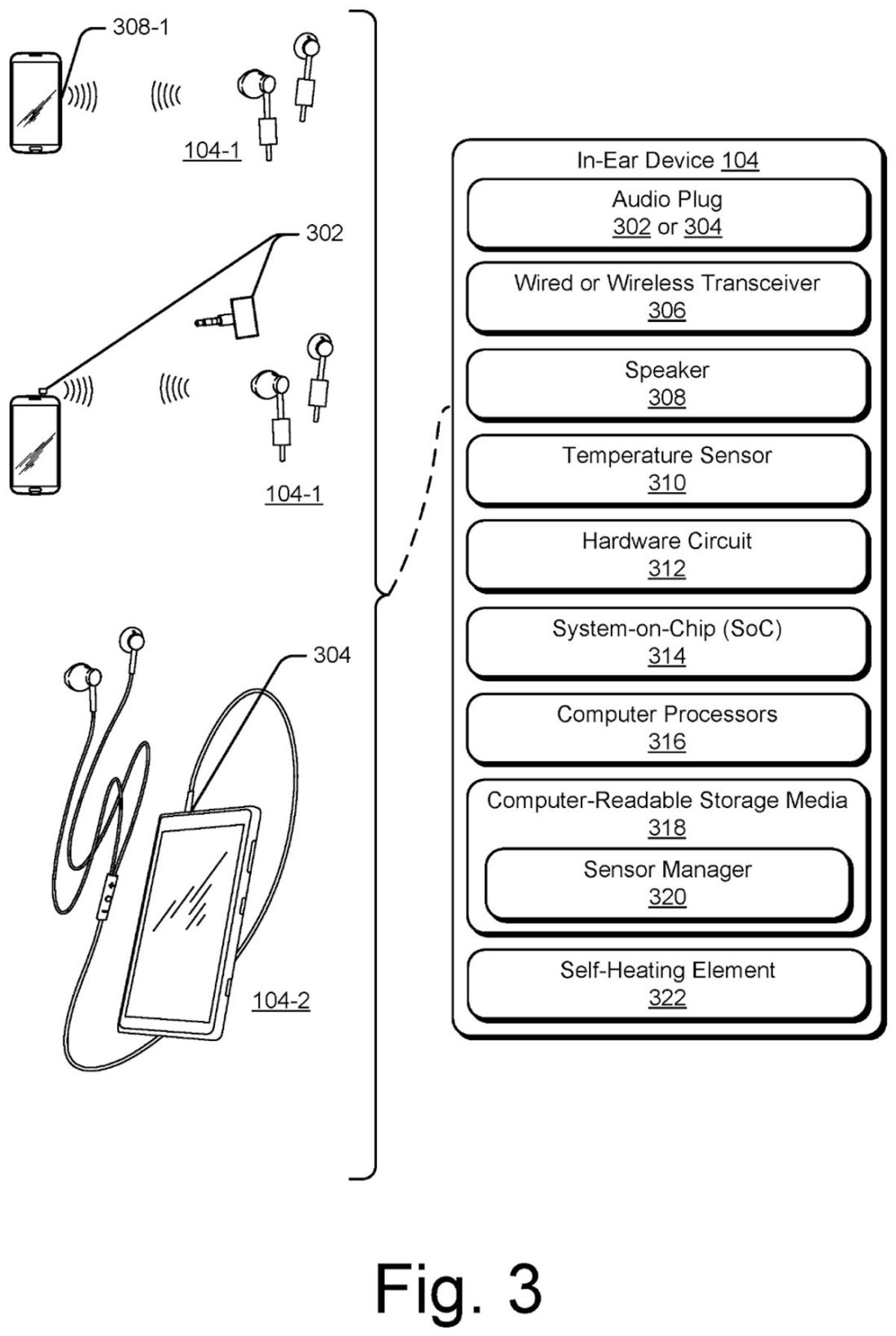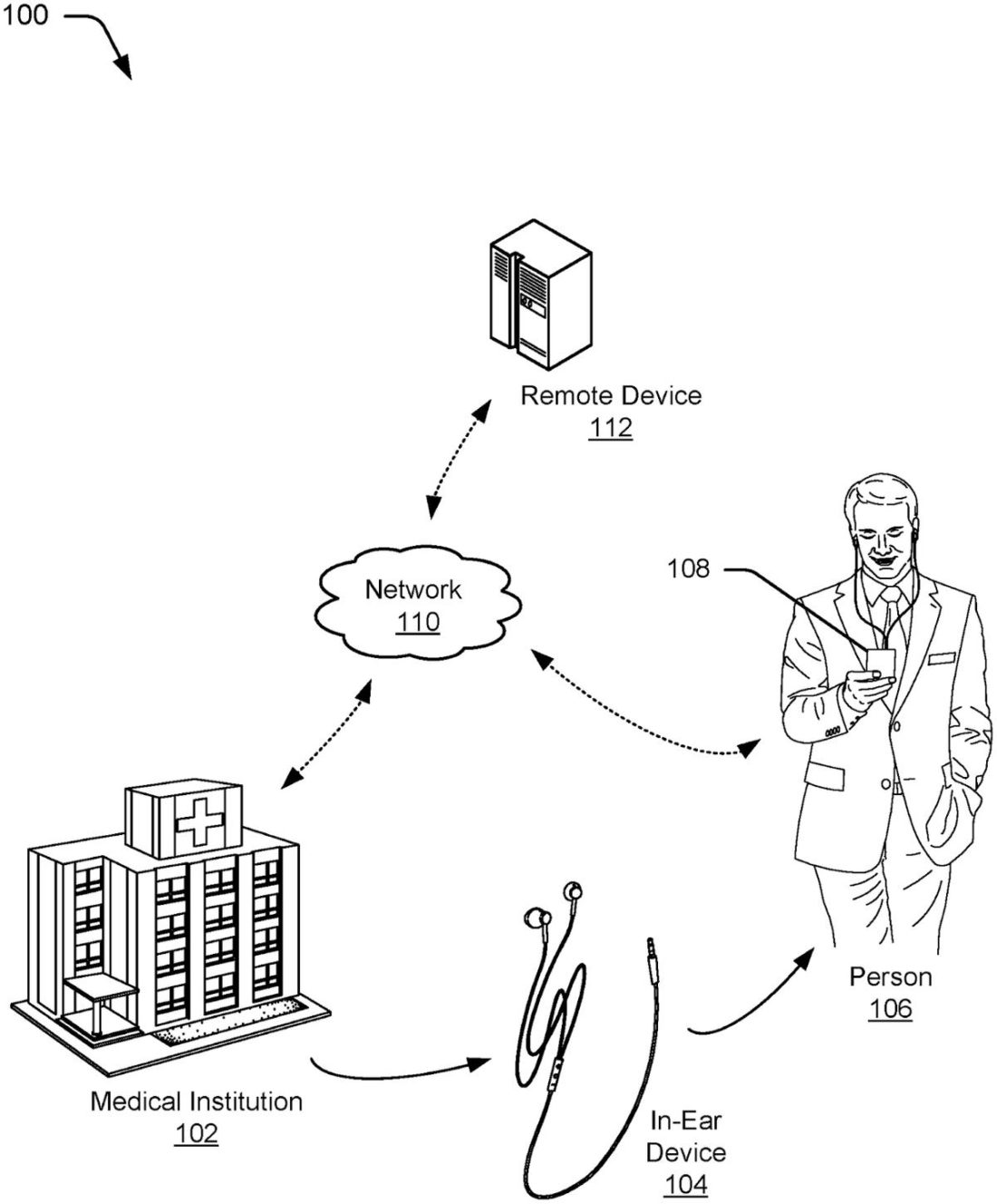A newly developed technology for in-ear audio devices are set to detect early signs of contagious diseases via temperature monitoring.
Five years from their initial application, the “In-ear health monitoring” invention filed by former Google Engineers Jeffrey L. Rogers and Brian Derek DeBusschere on March 23, 2015, which aims for the early detection of contagious diseases, is now in its active status.
This application was spearheaded by Jeffrey L. Rogers, former Google Director of Engineering and now IBM’s Global Research Leader, Distinguished Research Staff Member, and Senior Manager. Another proponent was also former Google Engineer Brian Derek DeBusschere who is now working for the Verily Life Sciences.
How This In-ear Health Monitoring Technology Works
Rogers and DeBusschere both saw the need to identify contagious diseases in their early stages through an audio device installed on smartphones.
The patent document states that a person who may have been exposed to a contagious illness like Ebola may be quarantined, obliged to routinely visit a doctor for advice, or even asked to monitor his or her own health.
However, there can be serious disadvantages to each of these approaches. The identification of the infection may be delayed as it may take days to weeks for the body to produce sufficient antibodies to be detected.
The wired in-ear health monitoring, and audio device technology developed by Rogers and DeBusschere aims to avoid this kind of delay by routinely monitoring the user’s body temperature using a mobile device connected to the in-ears.
The techniques can be used repeatedly to calculate a temperature differential for the user, which helps with the early identification of contagious diseases as well as other possible illnesses.

In some forms, this wired in-ear gadget may be produced cheaply and is compatible with a wide range of usual mobile devices, including smartphones, smart watches, tablets, and music players.
The data or temperature differential gathered by these in-ear devices is then processed via a mobile device and sent to a remote device handled by a medical institution.

These connected in-ear gadgets can be distributed to hundreds, thousands, or even tens of thousands of people in situations where a contagious disease like Ebola or the Swine Flu breaks out, enabling early diagnosis of the infectious diseases.
And, since the data transfer is real-time, medical practitioners can immediately be notified upon the detection of a potential disease. This early detection is claimed to reduce the mortality rate of its users as well as the person-to-person transmission of the contagious disease.
In-ear Health Monitoring for Covid-19
In 2019, Severe acute respiratory syndrome coronavirus 2 (SARS-CoV-2) was first detected in Wuhan, Hubei Province, China which gave birth to the “seventh human coronavirus” leading to an unexpected pandemic outbreak of COVID-19.
COVID-19 is one of those contagious diseases present today that is hard to identify during the beginning as its symptoms can not be fully observed until 2-14 days after its transmission, taking an average incubation period of 5-6 days.
What makes the infection even harder to detect is how some individuals would not perceive any of the symptoms but can still spread the disease-causing virus to others, making them “asymptomatic”.
Also according to Zalzala (2020), “the difficulty in controlling the spread of COVID-19 stems from the fact that some patients, especially those with high virus loads, can transmit the virus to others despite being asymptomatic.”
Meanwhile, some of the symptoms of COVID-19 include dry cough, shortness of breath, fever, chills, muscle pain, headache, sore throat, and loss of smell and taste.
How to use this new technology for Covid-19 detection
Since it was mentioned that one of the prevalent signs of contracting the virus was fever, the application of in-ear health monitoring and the audio device can serve as one of the many possible solutions as the device mainly gives importance to the user’s temperature.
Just like the sample application in Ebola and Swine Flu areas, this device can also be given to people who have had contact with Covid-19 patients for daily monitoring until the end of the quarantine period.
With this in-ear health monitoring tech, medical practitioners can automatically be notified of the change in temperature caused by possible fever due to Covid-19, prompting further action.
A similar study in 2021 by the Technical University of Munich showed that in-ear sensors were successful when it came to monitoring high-risk COVID-19 patients at home.
According to researcher Georg Schmidt, since there was no direct contact between the patient and the medical personnel, “the risk of infection for medical and nursing staff can be reduced.” He added that as the patient’s clinical course is regularly evaluated, their chances of survival are also likely to grow.
From this positive result, it can be implied that this new invention of in-ear health monitoring and audio devices can take its place and make an impact to the health sciences department.
- https://patents.google.com/patent/US11219412B2/en
- https://www.linkedin.com/in/jeffrey-rogers-308a8156/
- https://www.linkedin.com/in/derek-debusschere-8326723/
- Ames, H. (2021, September 28). What does asymptomatic COVID-19 mean? https://www.medicalnewstoday.com/
- Ciotti, M., et al. (2020, July 9). The COVID-19 pandemic. https://www.tandfonline.com/
- Haridy, R. (2021, October 14). In-ear sensor successfully monitors high-risk COVID-19 patients at home. https://newatlas.com/
- Smith, A. (2020, May 6). Early symptoms of COVID-19: What you need to know. https://www.medicalnewstoday.com/
- Vazquez-Pertejo, M. (2020, June). Diagnosis of Infectious Disease. https://www.msdmanuals.com/home/
- Zalzala, H. (2020, September 16). Diagnosis of COVID-19: facts and challenges. https://www.sciencedirect.com/
